What is W Sauce Made Of?
Dive into the intriguing world of Worcestershire sauce, or as it’s commonly abbreviated, ‘W Sauce’. This iconic condiment’s journey began in the early 19th century in the town of Worcester, England, where it was developed by the inventive chemists John Wheeley Lea and William Henry Perrins.
Despite its initially unpalatable taste, an aging process transformed it into the rich, savory sauce beloved worldwide today.
Known for its complex flavors and versatile culinary uses, Worcestershire sauce enhances everything from classic Bloody Mary cocktails to hearty meat dishes and savory snacks.
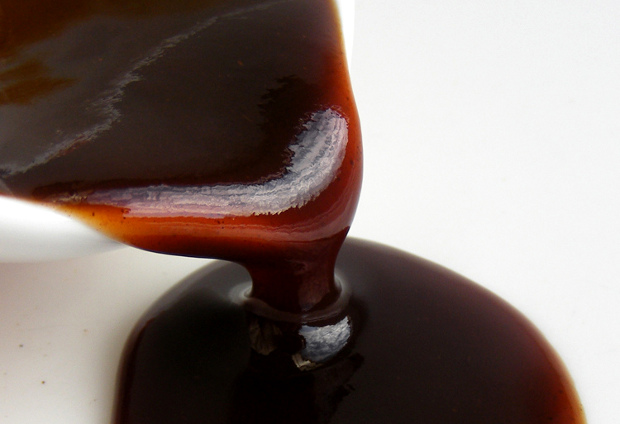
In this article, we’ll explore What is W Sauce Made Of, the rich history, uncovering its secret ingredients, and discover the various ways it has become a cornerstone of flavor in cuisines around the globe.
Ingredients of Worcestershire Sauce
Worcestershire sauce is celebrated for its complex and savory flavor profile, which is a result of a unique blend of ingredients. Each component contributes to its distinctive taste, which can enhance a wide array of dishes. Here are the key ingredients typically found in Worcestershire sauce:
Vinegar:
The base of the sauce, vinegar gives Worcestershire its tangy character. Most commonly, malt vinegar is used, though some variations might use other types like white or spirit vinegar.
Anchovies:
These small fish are the backbone of the sauce’s umami depth. Anchovies are fermented, which intensifies their flavor and adds a rich, salty dimension.

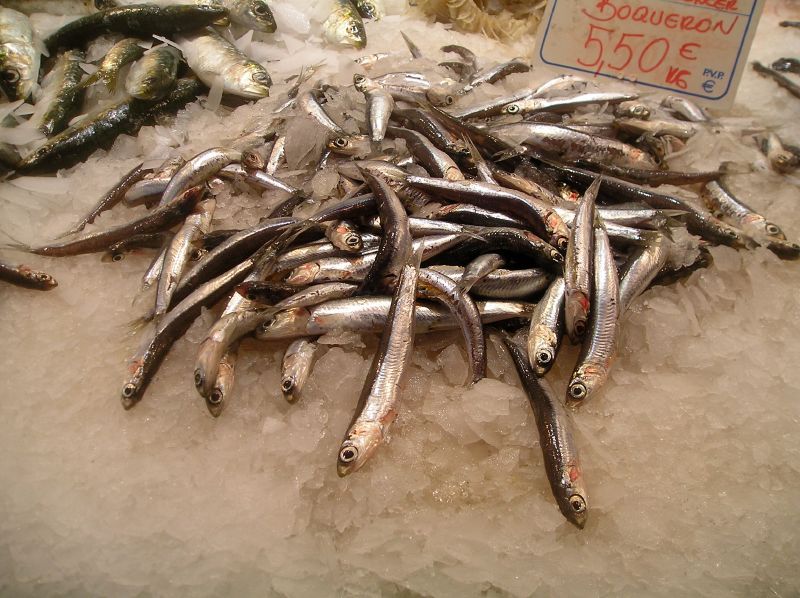
Molasses:
Adding a touch of sweetness and a dark color, molasses balances the acidity of the vinegar and the saltiness of the anchovies.
Tamarind Extract:
This ingredient brings a fruity sourness that is integral to the sauce’s unique profile. Tamarind also contributes to the sauce’s slight thickness and dark color.
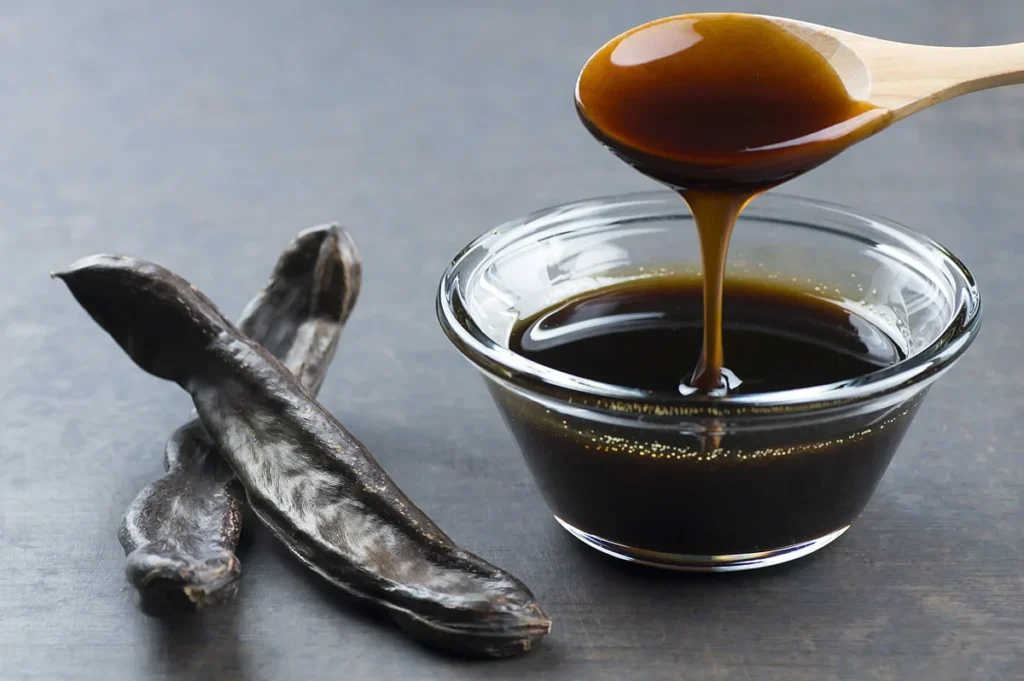
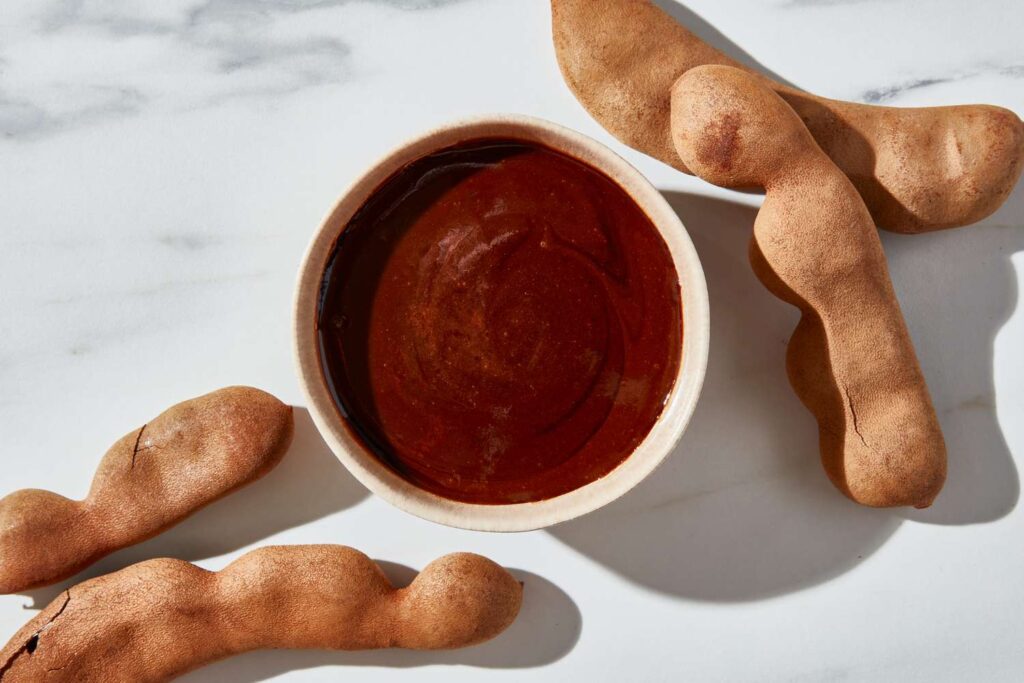
Onions and Garlic:
These aromatics are essential for adding a subtle, earthy flavor that underpins the sauce’s robust profile.
Sugar:
Usually in small amounts, sugar helps in balancing the sharpness of the vinegar and the bitterness of some of the other ingredients


Spices and Seasonings:
The exact spices used can vary, but commonly include cloves, soy sauce, lemons, pickles, and peppers. These contribute to the multi-layered flavor experience that Worcestershire sauce provides.
Salt:
Enhances all the flavors, making the individual ingredients come together cohesively.
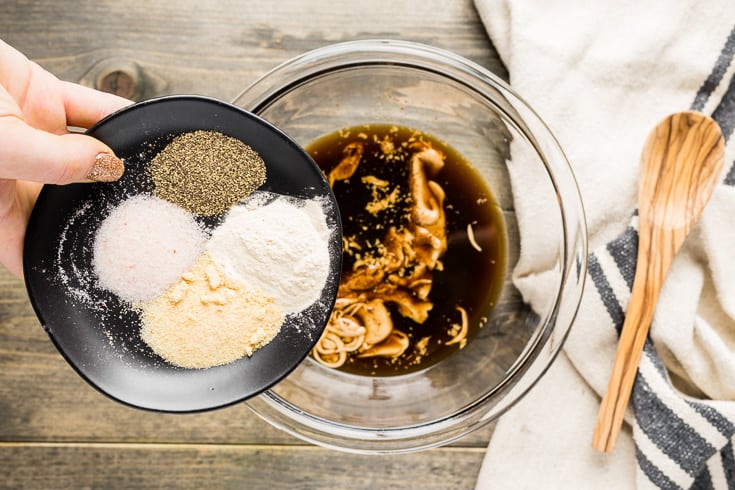

Each brand of Worcestershire sauce may have its unique twist on this recipe, adding or adjusting ingredients to create a distinct flavor. This sauce, therefore, not only serves as a condiment but also as a key ingredient in marinades, dressings, and even cocktails, providing a burst of flavor that elevates any dish.
Homemade Worcestershire Sauce Recipe
Making your own Worcestershire sauce at home is a rewarding endeavor that allows you to tweak the flavor to your liking. Here’s how you can create this pantry staple from scratch:
Ingredients:
- 2 cups malt vinegar
- 1/2 cup molasses
- 1/2 cup soy sauce
- 1/4 cup tamarind paste
- 3 tbsp finely chopped anchovies or anchovy paste
- 2 tbsp sugar
- 1 tbsp salt
- 1 clove of garlic, minced
- 1 small onion, finely chopped
- 1/2 tsp ground cloves
- 1/2 tsp chili powder
- 1/4 tsp ground cinnamon (optional)
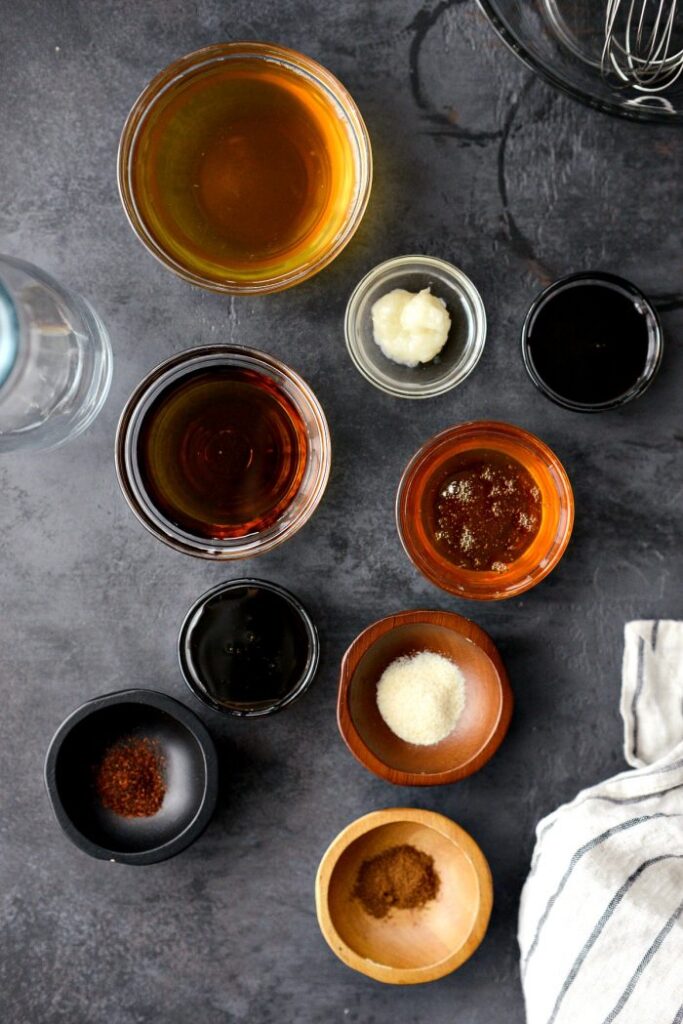
Directions:
Combine Ingredients: In a medium saucepan, combine the vinegar, molasses, soy sauce, and tamarind paste. Heat over medium until the mixture comes to a gentle simmer.
Add Aromatics: Add the chopped anchovies, sugar, salt, garlic, onion, and spices to the saucepan. Stir well to ensure all the ingredients are evenly distributed.
Simmer: Reduce the heat to low and let the mixture simmer gently for about 20 minutes, or until the onions and garlic are very soft.
Blend: Allow the mixture to cool slightly, then transfer it to a blender. Blend until smooth.
Strain: Using a fine-mesh sieve, strain the sauce into a bowl, pressing on the solids with a spoon to extract as much liquid as possible.
Bottle and Age: Pour the strained sauce into a clean bottle or jar. Seal and let the sauce age in a cool, dark place for at least two weeks before using. This aging process helps the flavors meld and deepen.
Enjoy: Use your homemade Worcestershire sauce in dressings, marinades, or as a condiment to enhance your meals.
Storage Tips: Keep your Worcestershire sauce in a cool, dark place for up to 6 months. Always use a clean spoon to avoid contamination.
Worcestershire Sauce Regional Variations
Worcestershire sauce is a global phenomenon, and like many beloved foods, it has inspired various adaptations that cater to regional tastes and available ingredients. Here’s a look at some of the interesting regional variants of Worcestershire sauce:
- American Worcestershire Sauce:
- Main Differences: American versions often have a sweeter taste and a thicker consistency. They sometimes include additional ingredients like apple cider vinegar or chili pepper extracts.
- Popular Uses: Commonly used in barbecue sauces, Caesar salads, and as a marinade for meats.
- Japanese Worcestershire Sauce (ウスターソース):
- Main Differences: Known locally as “Usutā Sōsu”, Japanese Worcestershire sauce is typically sweeter and thicker than the original. It often includes fruit and vegetable purees, making it more akin to a rich ketchup.
- Popular Uses: Widely used in dishes like Okonomiyaki (savory pancakes), Tonkatsu (breaded pork cutlet), and Yakisoba (fried noodles).
- Indian Worcestershire Sauce:
- Main Differences: Adapted to suit local tastes, Indian versions might include more spices like turmeric and cumin, giving it a more aromatic and spicy profile.
- Popular Uses: Often used in marinades for tandoori dishes and as a seasoning in snack mixes.
- South African Worcestershire Sauce:
- Main Differences: This variant can be spicier and may include unique ingredients like peri-peri peppers, reflecting the region’s penchant for heat.
- Popular Uses: Frequently added to stews, casseroles, and as a condiment for grilled meats.
- Vegan Worcestershire Sauce:
- Main Differences: While not regional, vegan versions of Worcestershire sauce substitute anchovies for seaweed or soy protein, offering a plant-based umami flavor.
- Popular Uses: Used in vegan cooking wherever traditional Worcestershire sauce is called for, such as in vegan shepherd’s pie or veggie burgers.
These variations highlight how a single condiment can be adapted to meet different dietary preferences and flavor profiles, showing the versatility and universal appeal of Worcestershire sauce.
Culinary Uses of Worcestershire Sauce
Worcestershire sauce is a true chameleon in the kitchen, adept at enhancing flavors in a multitude of dishes. Its unique combination of tangy, sweet, and umami notes makes it an invaluable ingredient in both cooking and seasoning. Here’s how Worcestershire sauce is used across different culinary applications:
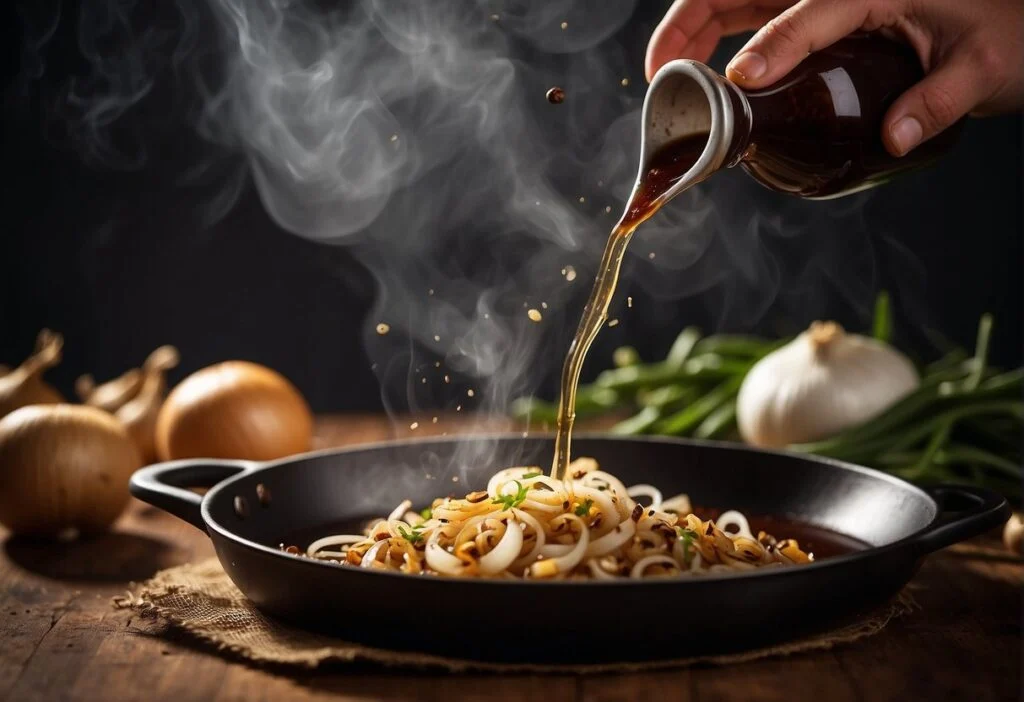
Marinades: Worcestershire sauce is a popular choice for marinades, especially for meat. It helps tenderize the meat while infusing it with deep, savory flavors. Whether you’re preparing steak, chicken, or even tofu, adding some Worcestershire sauce to your marinade mixture can dramatically boost the taste and texture of your final dish.
Soups and Stews: A splash of Worcestershire sauce can be a game changer for soups and stews. It adds a layer of complexity and richness that elevates basic ingredients. From beef stew to tomato soup, just a little bit of this sauce goes a long way in building a robust flavor profile.
Bloody Marys: No Bloody Mary is complete without Worcestershire sauce. It’s a key ingredient that contributes to the cocktail’s signature savory character. The sauce complements the tomato juice and spices, creating a balanced and flavorful drink.
Caesar Salad Dressing: Worcestershire sauce is essential in authentic Caesar dressing. It enhances the dressing with its sharp, piquant flavor, pairing wonderfully with the creamy texture and Parmesan cheese.
Barbecue Sauces: Many barbecue sauce recipes include Worcestershire sauce for its ability to add depth and a slight tang. It works particularly well in sauces intended for grilling or basting, offering a subtle complexity that enhances the smoky flavors.
Sautéing and Stir-Frying: Adding Worcestershire sauce while sautéing vegetables or during a stir-fry can introduce an unexpected yet delightful twist. It’s particularly effective in vegetarian dishes, where it adds a meatiness without the meat.
Cheese Dishes: Worcestershire sauce and cheese are a match made in heaven. It’s often used in dishes like Welsh rarebit, cheese toasts, or even sprinkled over scrambled eggs with cheese for an extra kick of flavor.
The versatility of Worcestershire sauce in cooking is truly remarkable. Its ability to meld into a variety of dishes while enhancing underlying flavors without overpowering them makes it a staple in any culinary enthusiast’s kitchen.
Health and Nutrition
Worcestershire sauce, while used sparingly in cooking, packs a flavorful punch and brings with it a set of nutritional considerations. Here’s an examination of its health benefits and nutritional content:
Nutritional Content:
- Low in Calories: Worcestershire sauce is low in calories, with about 20 calories per tablespoon, making it a flavorful addition to meals without adding significant caloric load.
- Sodium: It contains a relatively high amount of sodium, around 200 mg per tablespoon. Those monitoring their sodium intake should use it judiciously.
- No Fat: Worcestershire sauce contains virtually no fat, which makes it a good choice for flavoring foods without adding dietary fat.
- Vitamins and Minerals: It provides small amounts of vitamins such as niacin, vitamin C, and vitamin B6, along with minerals like zinc and iron, which are derived from its ingredients like anchovies, tamarind, and cloves.
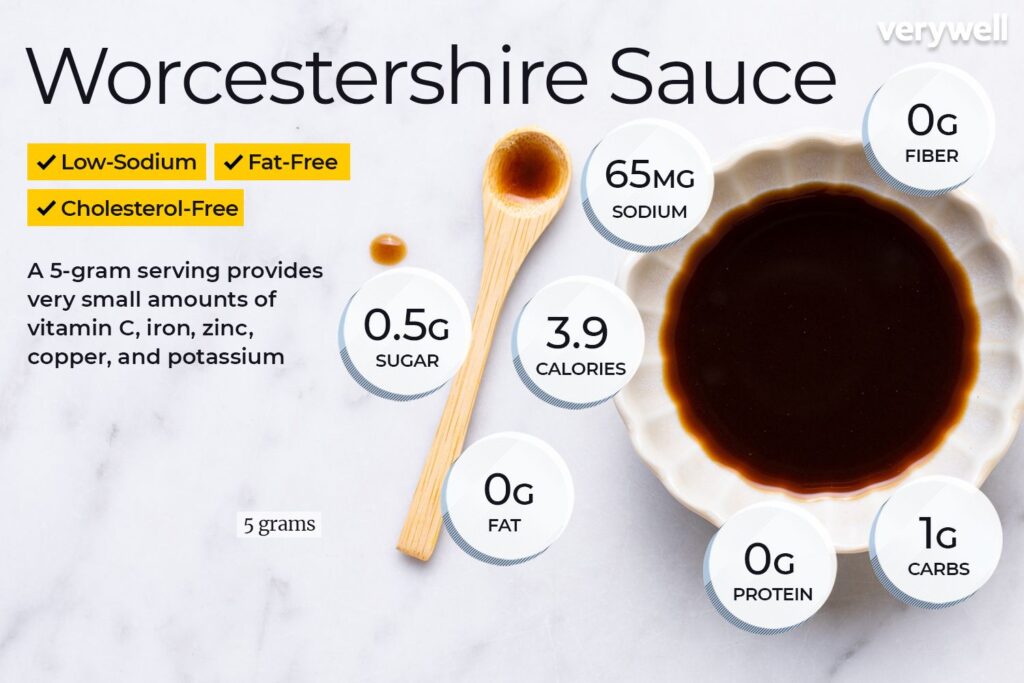
Health Benefits:
- Rich in Antioxidants: Ingredients like cloves and garlic provide antioxidants, which are beneficial for reducing oxidative stress and inflammation in the body.
- Supports Digestion: The vinegar and spices in Worcestershire sauce can stimulate digestion and improve gut health by promoting the production of digestive enzymes.

Considerations:
- Gluten Content: Traditional Worcestershire sauce is made using malt vinegar derived from barley, which is not gluten-free. However, gluten-free versions are available that use alternative forms of vinegar.
- Fish Allergens: Since anchovies are a primary ingredient, it is not suitable for people with fish allergies or those following a strict vegetarian or vegan diet. Vegan alternatives typically use seaweed as a substitute to mimic the umami flavor.
Incorporating Worcestershire sauce into your diet can enhance flavors without adding substantial calories, but it should be done in moderation, especially for those monitoring their sodium intake or with specific dietary restrictions.
Debunking Myths About Worcestershire Sauce
Worcestershire sauce, with its long history and unique blend of ingredients, has been the subject of various myths and misconceptions. Here, we aim to clarify these myths and reveal the truths about this beloved condiment:
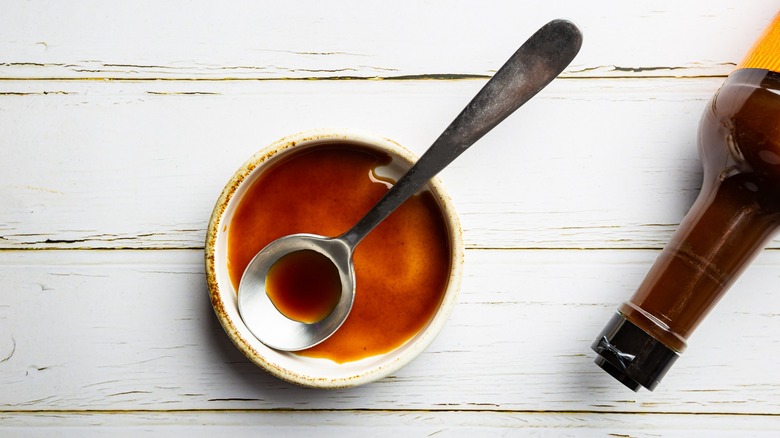
- Myth: Worcestershire Sauce Contains Harmful Chemicals
- Truth: Despite its complex flavor, Worcestershire sauce is made from natural ingredients like vinegar, molasses, anchovies, garlic, tamarind, and various spices. It does not contain artificial chemicals or harmful additives, making it a safe choice when used as part of a balanced diet.
- Myth: It’s Only Used in Meat Dishes
- Truth: While Worcestershire sauce is popular in meat marinades and stews, its use is incredibly versatile. It can enhance vegetarian dishes, add depth to cocktails like Bloody Marys, and even elevate simple snacks like cheese on toast.
- Myth: Worcestershire Sauce is High in Sugar
- Truth: Although Worcestershire sauce contains molasses and sugar, the amount per serving is quite low. A tablespoon typically contains less than 1 gram of sugar, making it a low-sugar addition to recipes.
- Myth: It Contains Gluten
- Truth: Traditional Worcestershire sauce uses malt vinegar, which is derived from barley, a gluten-containing grain. However, many brands now offer gluten-free alternatives that use different types of vinegar, making them suitable for those on a gluten-free diet.
- Myth: Vegan or Vegetarian Versions Aren’t Authentic
- Truth: While traditional Worcestershire sauce contains anchovies, vegan and vegetarian versions use alternatives like seaweed to replicate the umami flavor. These versions are crafted to provide a similar taste profile and are an authentic option for those avoiding animal products.
- Myth: It Is an English Creation
- Truth: Although Worcestershire sauce was indeed popularized and commercially bottled in Worcester, England, its origins are influenced by Indian cuisine. The recipe was likely inspired by similar sauces encountered by English colonials in India, incorporating local spices and flavoring techniques.
Consumer Preferences and Trends
Worcestershire sauce remains a staple condiment in many households and restaurants, but consumer preferences and market trends have evolved, influencing how and why people use this sauce. Here’s a closer look at current trends and consumer behaviors related to Worcestershire sauce:
1.Health-Conscious Choices:
Consumers are increasingly interested in condiments with health benefits or fewer additives. Worcestershire sauce brands that highlight natural ingredients and offer organic, low-sodium or gluten-free options are gaining popularity.
2. Global Flavors:
There is a growing demand for global and exotic flavors in the culinary world. Worcestershire sauce, with its complex and multi-layered flavor profile, is well-positioned to benefit from this trend, as it can add international flair to a variety of dishes.
3. Plant-Based Alternatives:
With the rise of vegetarian and vegan diets, there is an increased interest in plant-based condiments. Vegan versions of Worcestershire sauce, which substitute anchovies with alternatives like seaweed, are becoming more sought after.
4. Versatility in Cooking:
Consumers are looking for versatile products that can be used in multiple ways. Worcestershire sauce is celebrated for its ability to enhance a range of dishes, from marinades and stews to cocktails and salad, ranch dressings, appealing to a broad audience.
5. Premiumization:
There’s a trend towards premiumization in the condiment market, with consumers willing to pay more for gourmet or specialty versions of traditional products. Worcestershire sauces that offer unique ingredient combinations or artisanal production methods are particularly attractive.
6. Ethical and Sustainable Practices:
Today’s consumers are more aware of and concerned with how products are sourced and produced. Brands that demonstrate sustainable sourcing of ingredients and ethical production practices are likely to resonate more with environmentally conscious buyers.
These trends indicate a robust market for Worcestershire sauce with potential for growth and innovation. Brands that adapt to these preferences and continue to highlight the unique qualities of Worcestershire sauce will likely maintain their relevance and appeal in the condiment market.
Conclusion and Recommendations
Worcestershire sauce, with origins in 19th century England, has become a versatile staple in global cuisine. Its rich blend of vinegar, anchovies, molasses, tamarind, and spices lends a unique depth to various dishes, from marinades to cocktails.
Recommendations for Cooking:
A Worcestershire sauce alternative that provides a unique flavor to BBQ dishes. You can utilize Worcestershire sauce to enhance the flavor complexity of sauces, soups, vinaigrette and marinades. Add it to dips, stir-fries, and even desserts to discover its full potential. Start with small amounts to adjust the intensity to your preference.
Embrace the versatility of Worcestershire sauce in your culinary adventures, exploring both traditional and innovative ways to incorporate it into your recipes. Whether you choose a classic or a specialized variety like vegan or gluten-free, this condiment is sure to elevate your cooking.
Disclosure: Our blog contains affiliate links to products. We may receive a commission for purchases made through these links. However, this does not impact our reviews and comparisons. We try our best to keep things fair and balanced, in order to help you make the best choice for you.


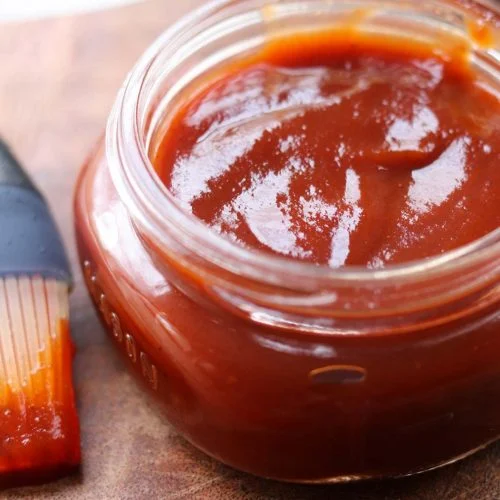




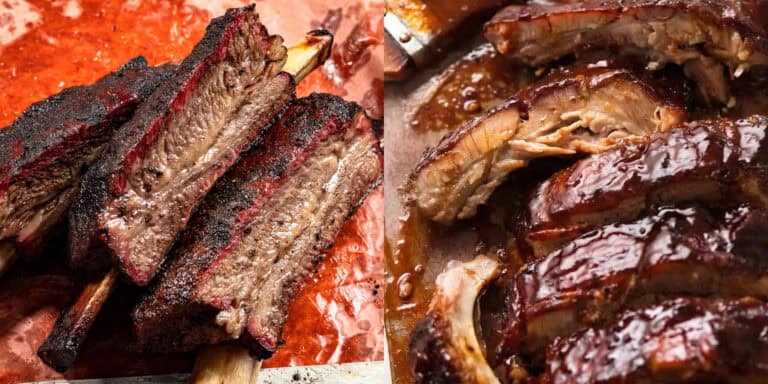
3 Comments